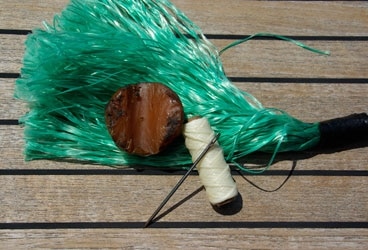
whipped lines 368
Finishing off lines by melting the ends is, at best, a temporary fix, and it won’t work well at all for such modern low-stretch lines as Dyneema or Vectran. Most lines that cruisers use have a core, where most of the line’s strength lies, and a cover intended to protect the core. It’s difficult to get the cover and core to melt together so they don’t separate. On racing boats, where lines are replaced frequently, the cover on halyards and sheets is often stripped from the Spectra core to save weight.
All lines should be finished so the core and cover maintain their relative positions-you don’t want the core to slip out of the cover or the cover to slip off the core, as so often results when you try to melt the ends. A good whipping is the answer. This can be a winter project, when the lines are all off the boat, or you can do it during quiet moments under way. As a lad cruising with my father on our Haida 26, Raven, we’d sometimes motorsail the 13 miles from our home in Victoria, British Columbia, to Roche Harbor, on San Juan Island. Along the way, we’d whip all the three-strand lines on board, from halyards to the lanyards on the fenders. It was a very satisfying way to pass the time and to do something good for the boat.
Follow the link for Andrew’s step-by-step process for whipping your lines right.
Andrew Burton is Cruising World’s associate editor.








